Spectres of Shortwave: Radio Towers Like Windchimes
rear projection video and artifacts - 2014
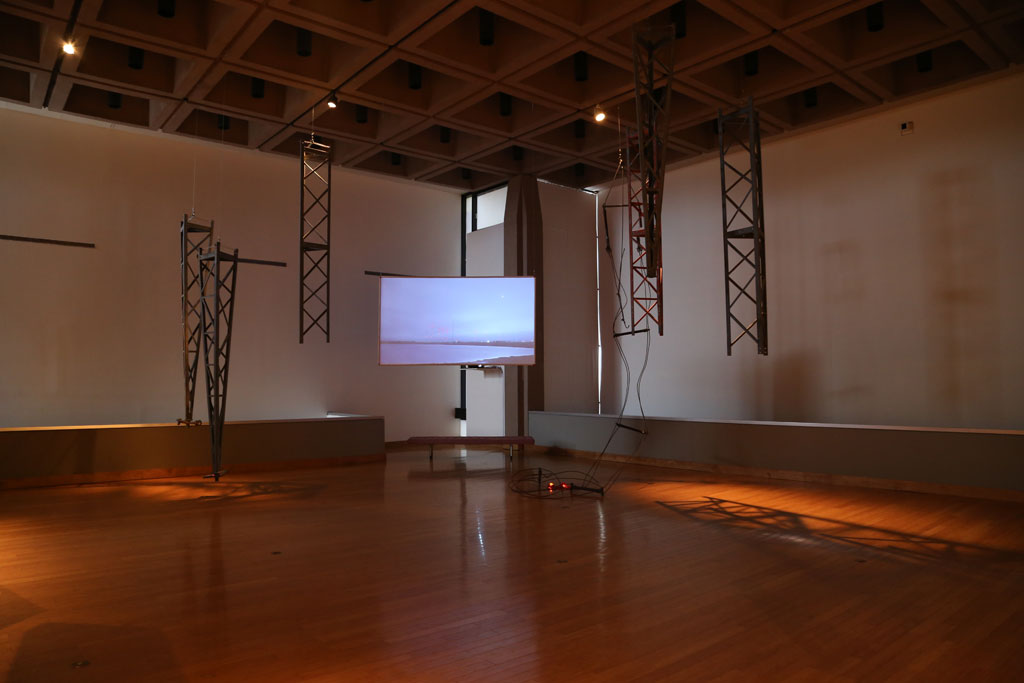
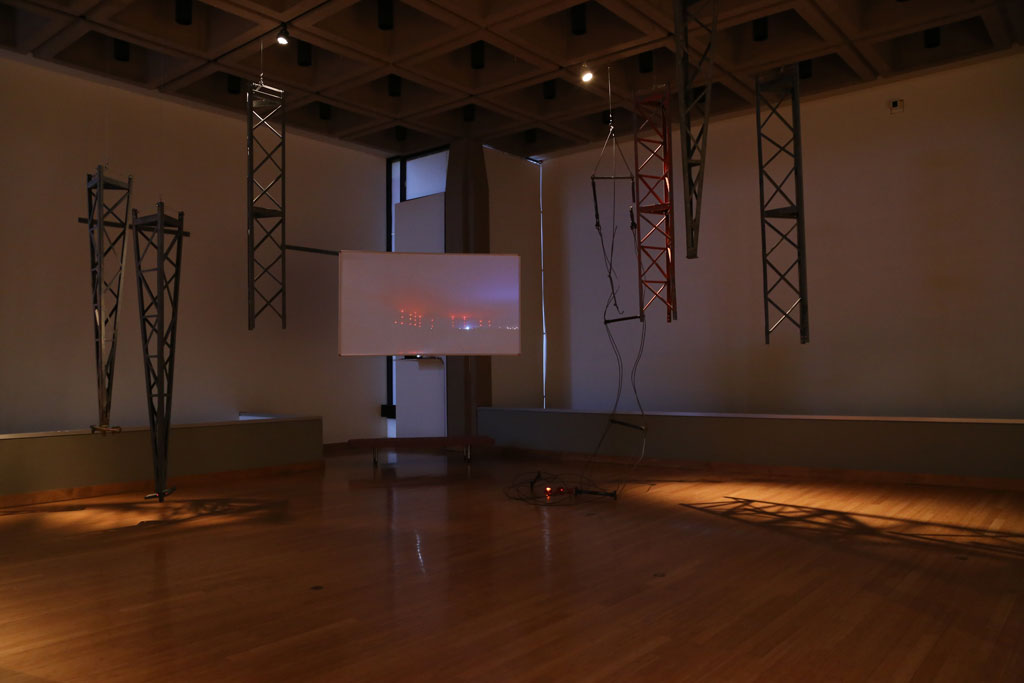
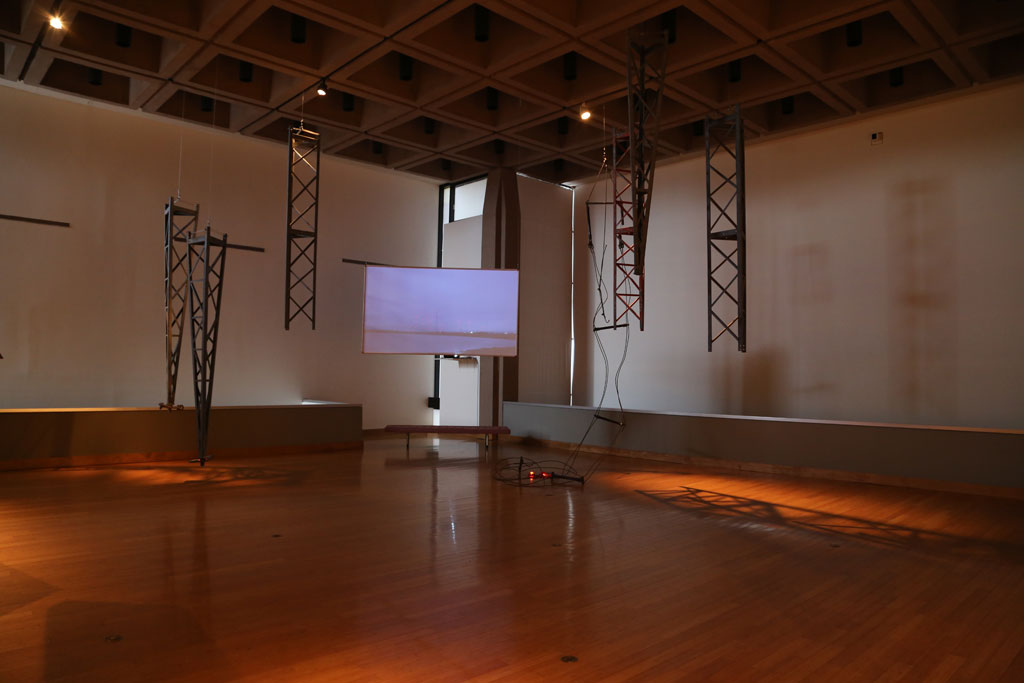
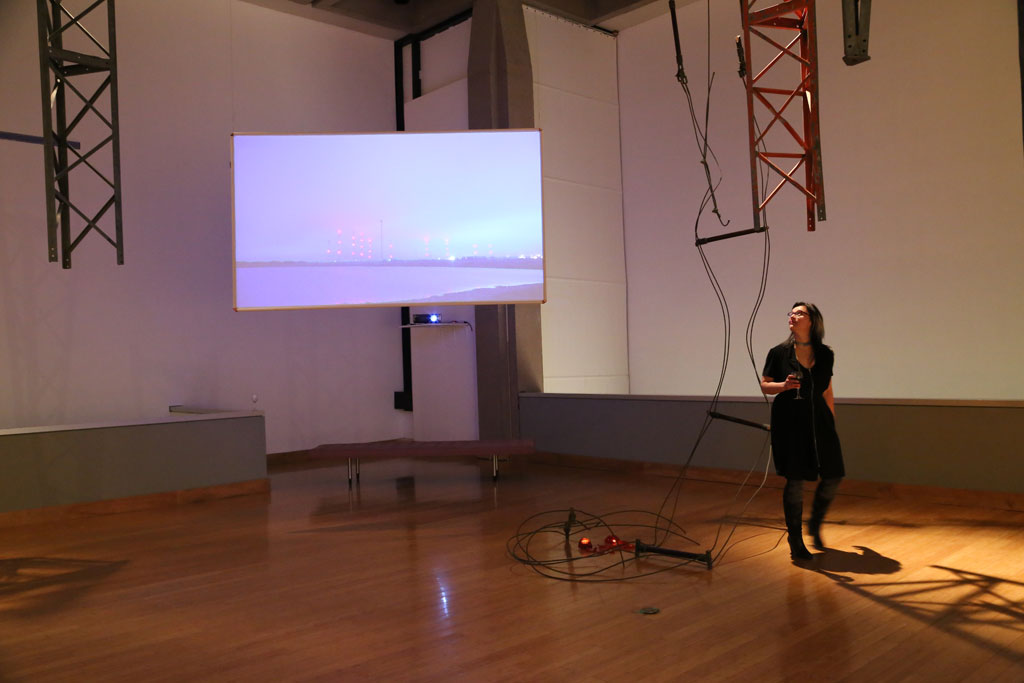

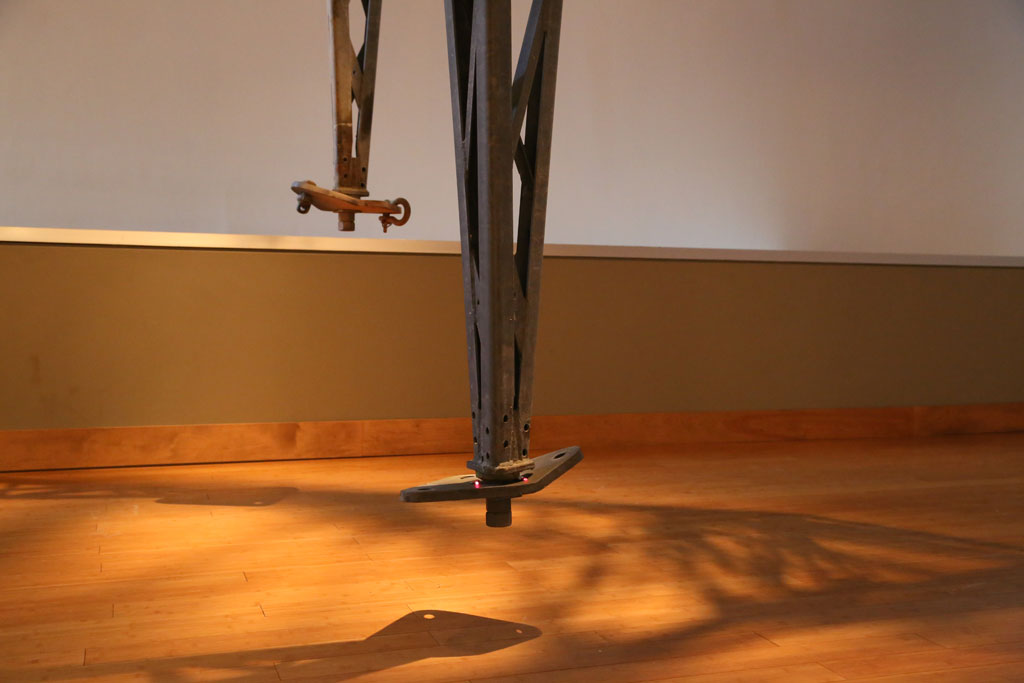
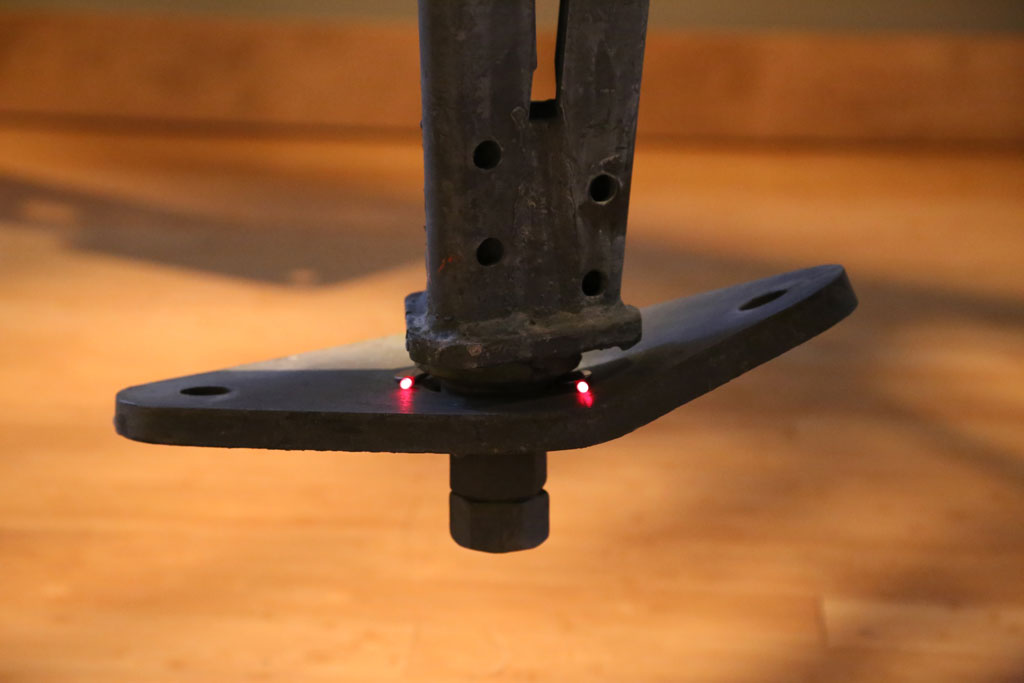

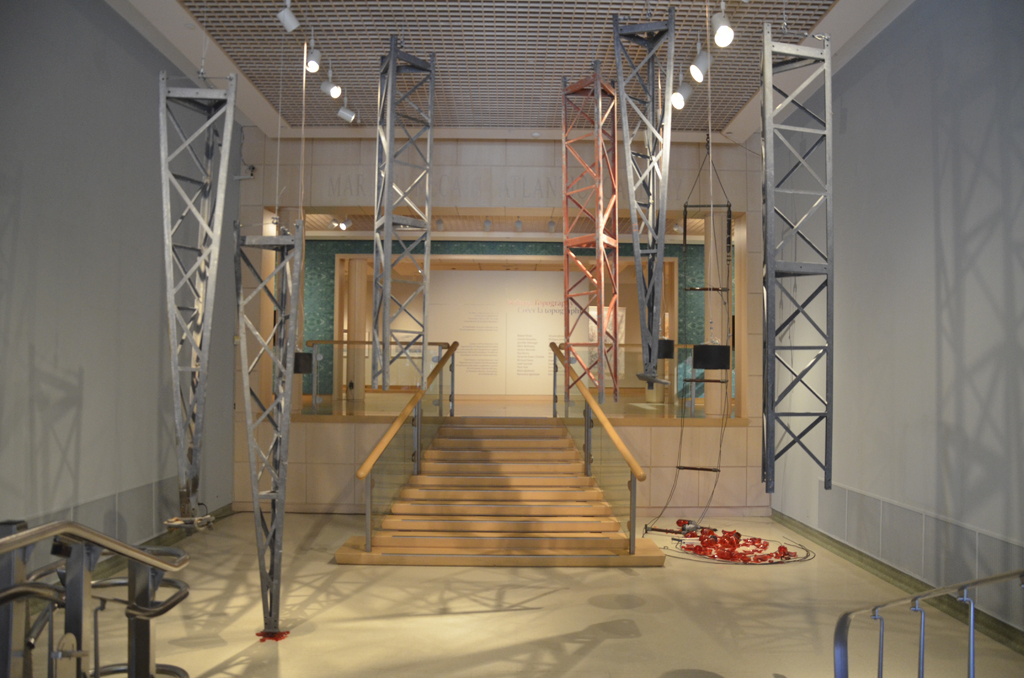
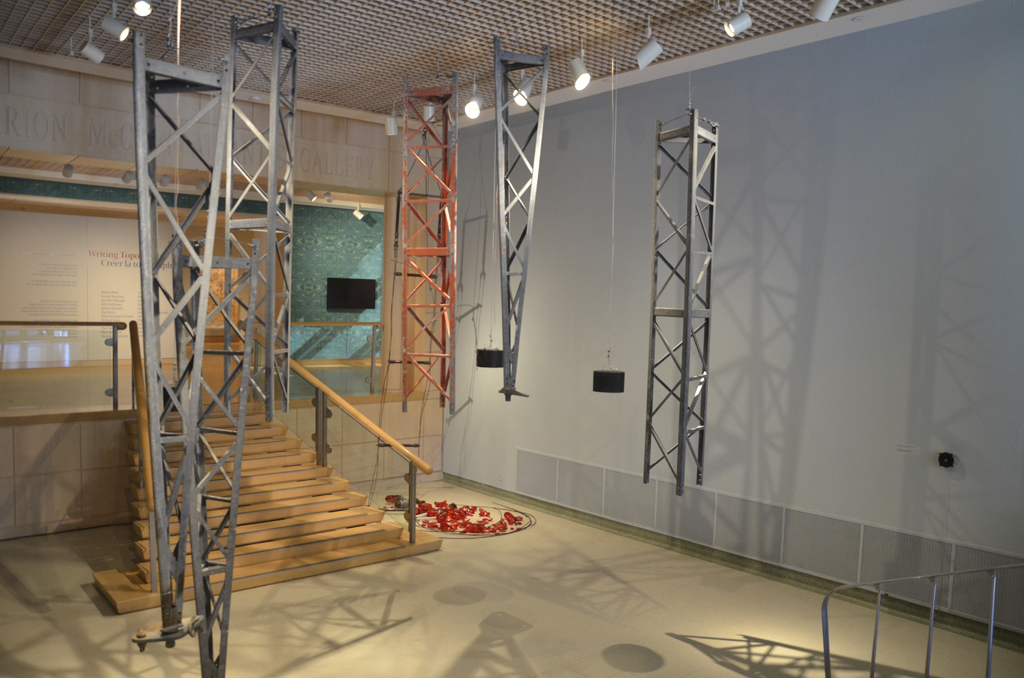
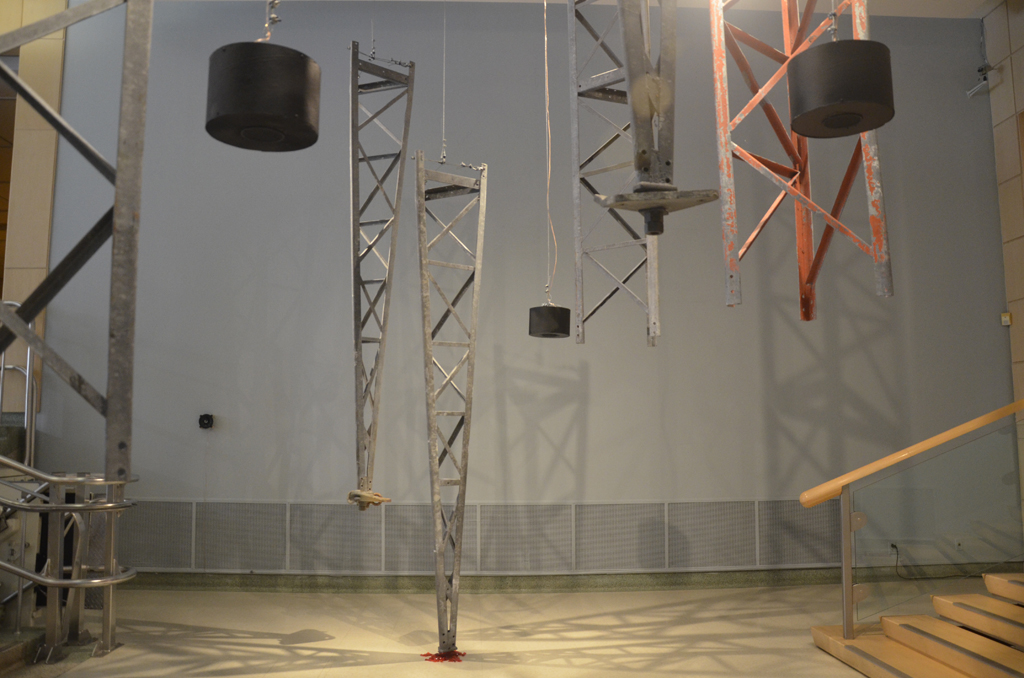
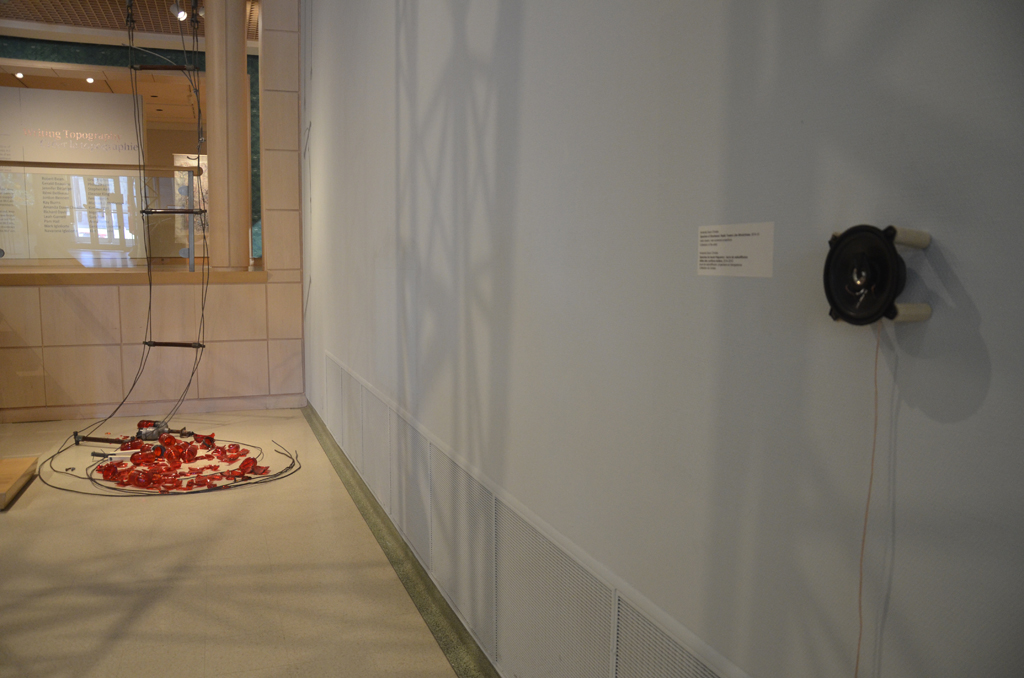
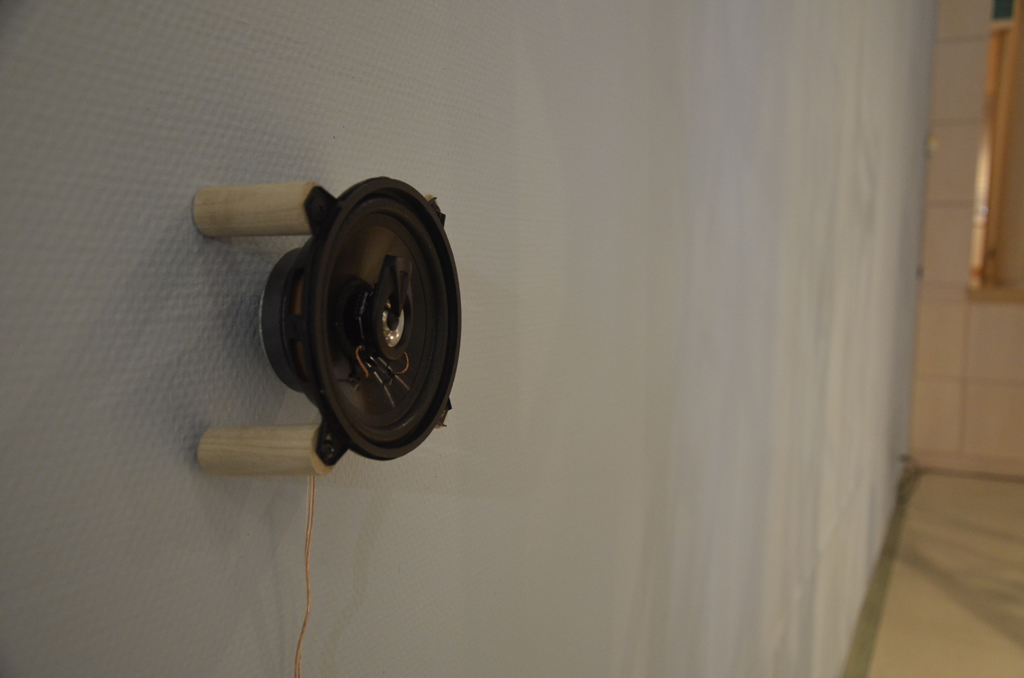
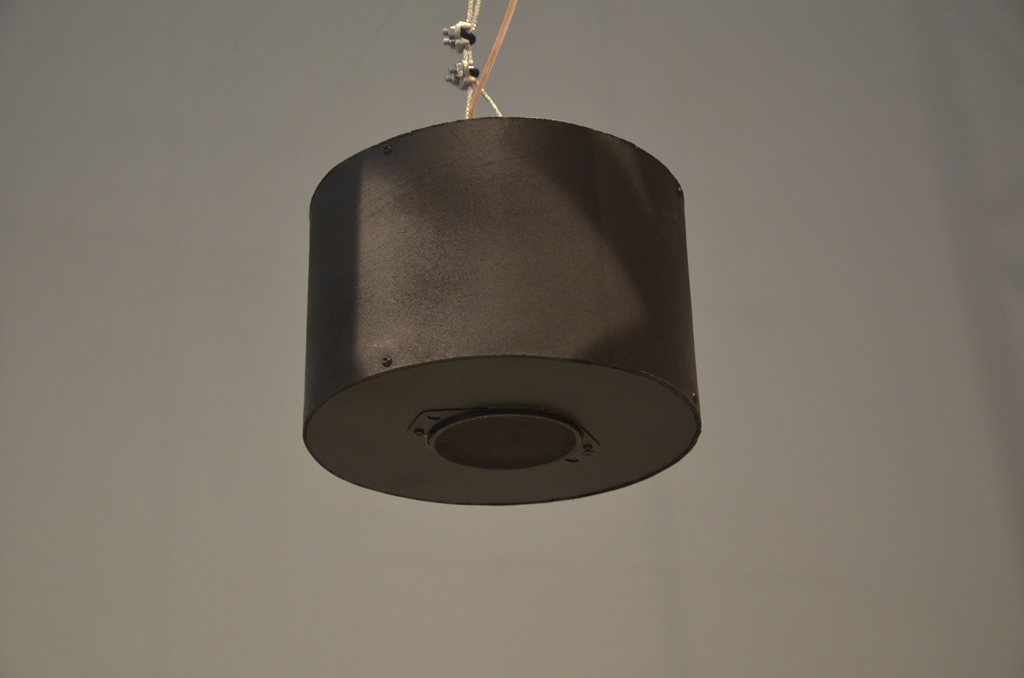

Spectres of Shortwave
A media based installation involving video projection on a suspended rear projection screen accompanied by artifacts installed in the space.
Theorectical and Conceptual Explorations
Spectres of Shortwave explores a mysterious web of international shortwave radio towers that dominates the Tantramar marshscape. Meanwhile, local residents hear radio broadcasts emanate unexpectedly from their household appliances. In addition to their striking visual presence on the flat, sea level landscape, they also add to the invisible landscape of the region through the radio waves that they transmit, as well as through the folklore and rural mythology that they inspire. Themes of regional identity, Atlantic Canadian landscape, international communication systems, rural myths, the environment, and language are all loosely explored in this project.
This project is the culmination of years of research and creative exploration, and as such it has several different facets and related projects. Spectres of Shortwave begins with the visual documentation of the radio towers in all 4 seasons in various weather conditions (on 35mm motion picture film and digital stills). It also involves audio interviews with local residents in three languages. Finally, it involves the collection of artifacts from the site as it is being dismantled. The images and audio will be used to create a feature length experimental documentary (funded by the Canada Council for the Arts, and Arts NB) destined for experimental and underground film festivals. The images, audio, and artifacts will also be used to create a gallery based installation.
The gallery installation will be completed long before the film (as most of the images have already been captured so work on the installation has already begun, however the film cannot be completed before the site is dismantled). The film, once completed, will be aimed at arts festivals and biennales alongside the visual art aspects of the project.
History and related projects
My work with radio waves began in 2009 with the Marshland Radio Plumbing Project a still ongoing project which includes a large sculpture (a sink that plays the radio), a series of 4x5foot photographs (in production), hand-made radios, and various maps and electronic schematic drawings. My work with the radio sink, led to further research on radio waves and therefore to analogue television broadcasts, which in turn resulted in a multifaceted projected entitled Last Days of Snow. Last Days of Snow involved several different projects (Nightlights Like Fireflies: a site specific intervention – Waiting for the End: a series of performative loops on CRT monitors – Final Transmissions: documentation from across Canada of the last signals cutting out – and The Begending of the Universe – a performance involving video projections and physics formulae). Some aspects of this project (particularly “Final Transmissions”) are continuing to be developed.
The Subject
Erected in 1938, the RCI site was transmitting by 1942. RCI broadcast to Europe, Africa, South America, and the Arctic. In addition to Canadian broadcasts, this site also served as a relay for Radio China, Radio Japan, Radio Korea, Voice of Vietnam, and Vatican Radio. It was the only high power shortwave relay station in Canada.
While the broadcasts from these towers were intended for an international audience, they also had an immediate impact on the locals who lived within a 50 km radius. Many local residents reported hearing radio broadcasts emanating from unusual household appliances, including kitchen sinks, bathtubs, toasters, refrigerators, telephones, and light fixtures. On an emotional level, the radio towers tied in to a very deep sense of home for many residents, as they stood as an incredibly distinctive landmark when travelling along the trans-Canada highway. In addition to their striking visual presence on the flat, sea level landscape, they also added to the invisible landscape of the region through the radio waves that they transmitted, as well as through the folklore and rural mythology that they inspired.
A turn of events
In 2012, they announced that the site would be shut down. The last Canadian international shortwave broadcast was sent in June of 2012, the final international relays were sent in October 2012, the last arctic broadcast (and the final broadcast to ever transmit from this site) was sent in November 2012. Here is a quote from Mark Montgommery, host of the Link, from the final RCI broadcast on June 24, 2012:
"It's also being said that shortwave is a technology at the end of its lifecycle or quite simply obsolete. And while there is no denying the importance of the internet, there's also no denying that it can be and is regularly blocked by authoritarian regimes. Shortwave broadcasts on the other hand almost always get through to people hungry for information. Radio has also always been extremely inexpensive and highly portable, easily accessible to everyone around the world no matter what their financial situation. But now I find myself, on behalf of all of us, saying goodbye to 67 years of radio, and so, for all of us, thank you so much, and goodbye."
Exhibition History
2014 Confederation Centre Art Gallery, Charlottetown, PE (Canada)
Somewheres, exhibition curated by Pan Wendt
This exhibition presents the work of 13 young artists who live and work in the Maritimes. Somewheres is a thematic show about a changing place as well as a survey of its most promising talent. Its title reflects the multiplicity and uncertain origin of the region's identity, defined as much by dreams and myths of escape—from here (deprivation, isolation, marginalization, routine) or there (modernity, alienation, instability, absorption)—as by any inherent qualities. One of the most enduring tropes about the creative process is that of the critical mass, the notion that the largest gathering of people generates the most interaction, and thus the greatest production of new ideas. Countering this myth is the reality that large centres often produce homogeneity, and that unhindered communication can even lead to a kind of cultural sameness, as everything is digested and exchanged. It may precisely be the failures of communication—which loom large in the work in Somewheres—that produce new approaches.
If the Maritimes are one of those locations where broader cultural paradigms don't entirely succeed in taking root or peter out at their edges, then the region might actually be a hotbed for the kinds of difficult negotiations that generate change. Somewheres is full of such collisions, as ideas tied to the region—the agrarian, traditional, local, dispossessed, vernacular, outmoded, misunderstood—are linked to notions such as the touristic, surveyable, mobile, contemporary, legible and exchangeable that connect it to a broader "everywhere."
-Pan Wendt, curator
Documentation Images of Installation:
images by Amanda Dawn Christoe